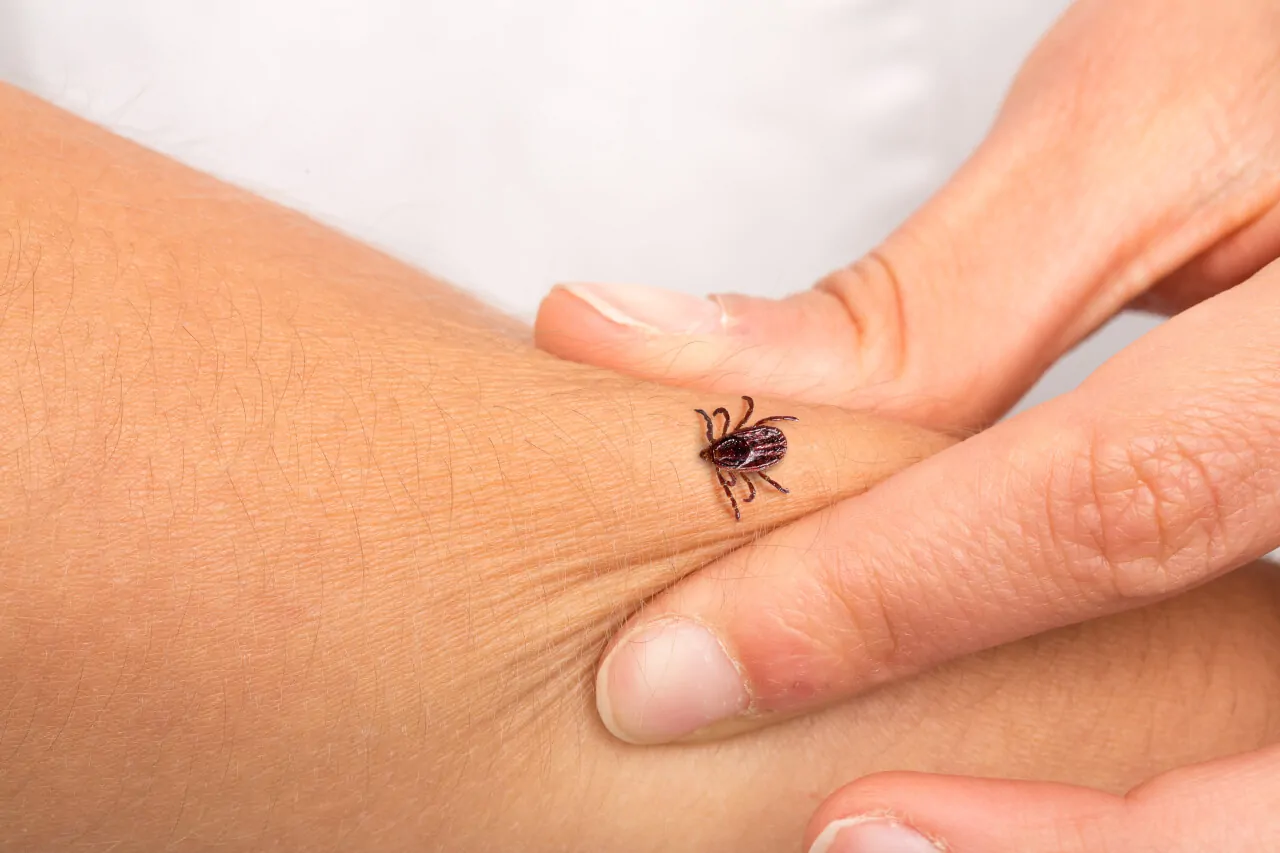Bed bugs often bite in clusters of 3 to 5 bites, arranged in a zigzag pattern. They are small, parasitic insects that feed on the blood of humans and other animals. They are typically active at night and bite people while they are sleeping. They are very good at hiding, and they can be difficult to get rid of once they have infested a place.
They are named “bed bugs” because they are commonly found in or near beds, mattresses, and bedding. The bites can be itchy and uncomfortable, and they can also lead to secondary skin infections.
These pests are nocturnal and feed on their hosts while they are sleeping, typically leaving itchy bite marks on the skin as evidence of their presence. They are adept at hiding in cracks, crevices, and other small spaces during the day, making them challenging to detect and eradicate.
They can spread rapidly as they hitch a ride on clothing, luggage, and other items, allowing them to move from one location to another. While not known to transmit diseases, they can cause discomfort, itching, and allergic reactions in some individuals.
Signs of Bed Bugs Infestation
There are several signs you can look out for. Here are some common indicators that may suggest:
Bites and Skin Reactions: Bed bug bites often appear as red, itchy welts on the skin. While these bites are not always reliable evidence of an infestation since they can be mistaken for other insect bites, multiple bites in a linear or clustered pattern may indicate bed bugs.
Bloodstains: Bed bugs feed on human blood, and after feeding, they may leave behind small bloodstains on bedsheets, pillowcases, or mattresses. Look for tiny, rust-colored spots or smears, particularly around areas where you sleep.
Dark Spots and Fecal Matter: Bed bugs tend to leave behind tiny dark spots or streaks of fecal matter on mattress seams, bed frames, or walls. These spots are usually black or dark brown and can resemble ink stains. They are often found near the feeding sites or hiding places of bed bugs.
Bed Bug Eggs and Shells: They reproduce rapidly, and their eggs are usually small, oval-shaped, and translucent. Look for these eggs, which are about the size of a pinhead, in crevices, on mattress seams, or behind furniture near sleeping areas. Additionally, you may come across empty exoskeletons shed by growing bed bugs.
Musty Odor: They release a distinct, musty odor that is often described as sweet or sickly. If you notice an unusual smell in your bedroom or other affected areas, it could be an indication of a bed bug infestation.
Active Bed Bugs: In severe infestations, you may directly spot live bed bugs crawling on your mattress, furniture, or walls. Bed bugs are small, typically about the size of an apple seed, with a flat, oval-shaped body and reddish-brown color.
If you see bed bugs, they will quickly run away to the nearest hiding place. Any dark place, such as inside a mattress or even a picture frame, is a good hiding place for bed bugs.
They can crawl quickly, so it may seem like they are flying or jumping. However, bed bugs cannot fly or jump.
Diagnosis of a Bed Bug Infestation
If you suspect that you may have a bed bug infestation, it is important to contact a pest control professional. They can inspect your home or other place for bed bugs and help you to develop a treatment plan.
To diagnose it, a pest control professional will typically look for the following signs:
- Live bed bugs or their eggs
- Bed bug bites on your skin
- Blood spots on bedding or mattresses
- Tiny, black specks (bed bug feces) on bedding, mattresses, or other surfaces
- Shed bed bug skins
Treatment
There are a number of different ways to treat it. The best treatment for you will depend on the severity of the infestation and the type of structure that is infested. Common treatment methods include:
Chemical treatments: Chemical treatments involve applying insecticides to areas where bed bugs are likely to be found. This includes bedding, mattresses, furniture, and other surfaces.
Heat treatments: Heat treatments involve raising the temperature of the infested area to a level that is hot enough to kill bed bugs and their eggs.
Cryonite treatments: Cryonite treatments involve freezing bed bugs and their eggs to death.
Prevention
There are a number of things that you can do to help prevent bed bug infestations. These include:
- Inspecting used furniture before bringing it into your home.
- Washing bedding and clothes in hot water regularly.
- Using a mattress cover.
- Vacuuming your home regularly, especially around bedding and furniture.
- Sealing up any cracks or crevices in your home where bed bugs could hide.
How to Get Rid of Bed Bugs Yourself
If you have a small bed bug infestation, you may be able to get rid of them yourself. Here are some tips:
- Vacuum your home regularly, especially around bedding and furniture. Be sure to empty the vacuum bag after each use.
- Use encasements for box springs and pillows.
- Place interceptors under the legs of your bed and other furniture.
- Professional Bed Bug Treatment
Conclusion
Bed bugs can be a nuisance, but they can also be a serious health concern. If you think you may have a bed bug infestation, it is important to contact a pest control professional right away. With prompt treatment, you can get rid of bed bugs and prevent them from coming back.
You can check more of our articles Here
FAQs
What are bed bugs?
They are small, parasitic insects that feed on the blood of humans and animals. They are commonly found in and around sleeping areas, such as beds, mattresses, and furniture.
How do bed bugs infest homes?
They can enter homes through various means, including infested furniture, luggage, clothing, or by crawling through cracks and crevices in walls and floors. They can also travel between rooms or neighboring properties.
What are the signs of a bed bug infestation?
Signs may include red, itchy bite marks on the skin, small blood stains on bedding or furniture, dark stains (bed bug feces) on mattresses and upholstery, or the presence of live bed bugs or their molted skins.
Are bed bugs dangerous?
While bugs are not known to transmit diseases, their bites can cause itching, skin irritation, and allergic reactions in some individuals. The emotional distress caused by an infestation can also impact one’s mental well-being.
How can I prevent a bed bug infestation?
It is essential to regularly inspect your bedding, furniture, and luggage for any signs of infestation. When traveling, inspect hotel rooms for bed bugs, and avoid bringing used furniture or items of unknown origin into your home.
How do I get rid of bed bugs?
Treating typically requires a combination of professional pest control services and do-it-yourself measures. This may include thorough cleaning, vacuuming, washing affected bedding and clothing with hot water, using mattress encasements, and applying insecticides as recommended by professionals.





